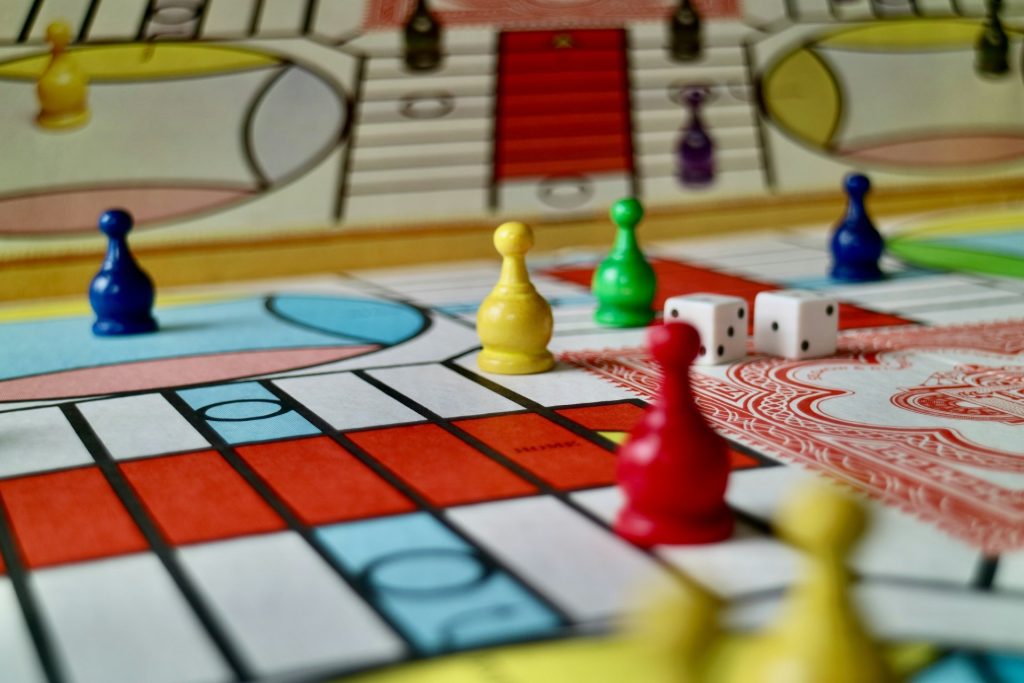Is there gender equality in competitive board and table games? – Daily Business

Gender equality is a widely discussed issue across numerous industries, from politics to sport to science and technology. When it comes to the world of competitive board and table games, that conversation is also taking place as many are wondering if a traditionally male-dominated area of society is becoming more inclusive.
There might well be a feeling that lingering stereotypes or institutional biases might keep women on the sidelines. However, there is a fight to ensure that this ends, and women are leading that charge. Irishluck.ie has reported on how Ireland’s first professional female poker player has urged more women to take up the game1 as a call to action to ensure gender equality is achieved in this often-overlooked sector.
But what does gender equality look like in this sense, and how can a more level playing field benefit the world of competitive board and table games?

 Photo by Nik Korba on Unsplash
Photo by Nik Korba on UnsplashWhat does the competitive scene look like?
Board and table games encompass a huge number of activities. Chess, Go, Backgammon, Dungeons & Dragons, bridge, and poker are all a part of it, but each of these—and many more—has their own competitive circuit and culture. The one thing all these games have in common is that men have traditionally outnumbered women at the highest level.
Chess might have the most obvious example of gender disparity, with only 42 women achieving the rank of grandmaster out of a total of 2087 as of 2025.2 Only Judit Polgár has really managed to successfully challenge male dominance at the highest level of the game. She achieved the rank of grandmaster at the age of just 15. Polgár became the only female candidate close to winning the World Chess Championship in 2005 and is still the only woman to have broken into the top ten rankings of chess players, which first happened in 1996.
The game has made efforts to improve female participation and has launched tournaments solely for female players. But even Polgár has admitted she’d have never achieved success in chess by sticking to these tournaments and not competing against males.3
It’s a similar story in other games, with many bridge tournaments divided by gender, while board games such as Magic: The Gathering or Settlers of Catan are dominated by men when it comes to the competitive scene.
The gender gap
So why in the year 2025 does this disparity still exist? There are plenty of reasons, but there are a few that stand out as key factors.
Cultural norms and stereotypes have their part to play in the lie of the land. Boys are still more likely to be encouraged to pursue these types of games as a hobby, which can then lead to entering the competitive sphere. Girls are often pressured by society into more nurturing pursuits, which can discourage them from taking up games as a hobby, and they may therefore miss out on a possible passion or even career.
The outdated gender idea that men are more naturally inclined to strategic pursuits also plays its part. These inherent biases can influence who even tries the game, who gets taken seriously in competition, and even, at the elite level of these games, who receives sponsorship money or media attention.
Visibility is also a key issue, as the saying, “You can’t be what you don’t see,” proves to be accurate. Women seeing other women succeed in a particular field can make it seem a real possibility that they could do the same. With a lack of that representation in high-level competitive table and board games, it creates a self-perpetuating cycle where fewer role models mean fewer new players. And the underrepresentation continues.
Unfortunately, there is also the very serious matter of harassment that women have to deal with. In competitive gaming environments, especially those online, women face sexism, toxic behaviour, and harassment from male players. It’s a more documented issue in the video game world, but it would be foolish to think it doesn’t exist in the table and board game communities. This range of behaviours has been described by Paul Booth in his 2021 title Board Games as Media,4
“The microaggressions, gendered assumptions, paternal attitudes, casual sexism at a gaming table, throwaway homophobic remarks, and mansplaining… all add up to an environment that can sometimes be implicitly or explicitly hostile or alienating to players that don’t fit the ‘traditional’ [male] mold.”
What’s being done?
There are some signs that the landscape is thankfully beginning to change to make the world of table and board games a more inclusive one. All-women’s leagues, mentorship programmes, and inclusive game design have emerged to try and combat the gender gap.
The Queen’s Gambit effect, following the popular Netflix series, has encouraged more girls to take up chess. Jennifer Shahade, women’s program director of the US Chess Federation, touted the success of the show in encouraging women and girls to take up or return to the game,5
“I notice a lot of them are coming back into the game and getting that confidence because the show depicts a woman who is able to find herself through the game, so I think that’s very appealing. And also the sense of community.”
Tournament organisers are increasingly aware of the need to make their communities more welcoming for all, while publishers are doing likewise with their games. Diversity guidelines for events and proactive moderation of online forums are becoming more common.
But there’s still a long way to go, particularly when it comes to games that involve high stakes, both financially and reputationally, such as poker.
Poker
Poker is the most lucrative and visible competitive table game in the world. The World Series of Poker is televised globally and has turned players into celebrities, while the game itself is thriving both in person and online.
Here, the gender divide is also stark. Only a small number of women compete in World Series of Poker events, with even fewer competing in high roller events where the stakes are even greater.
Why aren’t more women playing?
Poker comes with many of the same barriers as other board and table games, such as cultural norms, a lack of representation at the elite level, and hostile environments. Poker has the added nuance of being associated with gambling, a pursuit that has long been coded as masculine.
Poker also demands a thick skin. At the table, players must bluff, intimidate and read their opponents—all while potentially dealing with sexism or patronising behaviour. For many women, particularly those new to the game, this can be off-putting.
Changing the game
A growing number of women are carving out their own space in the poker world. Vanessa Selbst leads the all-time female money list with career winnings of over $11 million. Kristen Foxen, Liv Boeree, and Kathy Liebert are all leading players in the game, earning millions for themselves and shifting perceptions for other women around the world.
The inaugural PokerStars’ Women’s Winter Festival was held in December 2024 and proved to be the biggest women’s poker tournament held outside Las Vegas.6 271 women entered the event held in the UK, playing for a guaranteed £100,000 prize pool. But the prize on offer was secondary to the joy of the event itself for PokerStars’ ambassador for women in poker, Kerryjane Craigie, who said of the tournament,
“The minute you ask me, I cannot stop smiling. It has been one of the most awesome events I have been to. Even though I didn’t play, the atmosphere in here has been amazing, electric. If you see any of the clips, you will probably see that it was a hyper-vibe, excited room every single day for every single tournament.”
The way forward
Equality in competitive board and table games won’t happen overnight. It will require continued effort at every level, from game designers and publishers to tournament organisers and the players themselves.
Creating inclusive spaces, showcasing female role models, and actively challenging stereotypes and toxic behaviour are all essential steps. Men have their part to play by being allies for women, speaking up when they see issues that have previously kept women away from these spaces.
In conclusion
The world of competitive board and table games holds immense potential as a space where intellect, creativity, and strategy reign supreme. But for it to truly live up to that potential, it must be a place where everyone, regardless of gender, can participate on equal footing. The pieces are in motion. Now, it’s up to all of us to make the next move.
- Ireland’s First Professional Female Poker Player Urges Women to Get Into the Game, Written by Dermot Heathcote, Published by Irishluck
- The Current Number of Chess Grandmasters. Written by Sophia Birk. Published by superprof.co.uk
- I might never have become a chess grandmaster if I’d stuck to women’s only tournaments. Written by Judit Polgár. Published by The Guardian
- Board Games as Media. Written by Paul Booth. Published by Bloomsbury Publishing
- ‘It’s electrifying’: chess world hails Queen’s Gambit-fuelled boom. Written by Miranda Bryant. Published by The Guardian
- Poker’s new dawn as women’s festival breaks records and changes outlook for future. Written by Aaron Flanagan. Published by The Mirror
#gender #equality #competitive #board #table #games #Daily #Business




